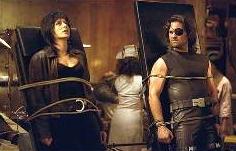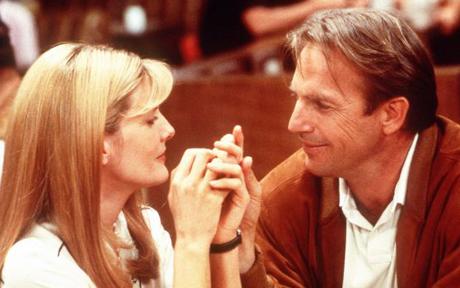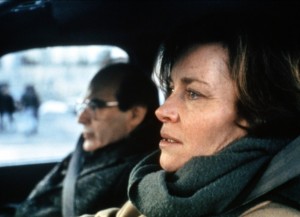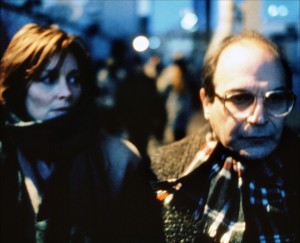From the January 29, 1988 Chicago Reader. –J.R.
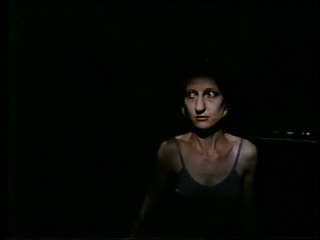
SLEEPWALK
*** (A must-see)
Directed by Sara Driver
Written by Driver and Lorenzo Mans
With Suzanne Fletcher, Ann Magnuson, Dexter Lee, Steven Chen, Tony Todd, Richard Boes, and Ako.
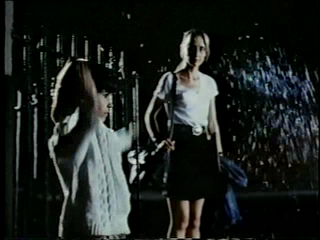
The French term fantastique — which emcompasses science fiction, comic strips, Surrealism, sword and sorcery tales, and many other forms of fantasy — suggests an attitude toward the imagination that is distinctly different from the Anglo-American model. In our more empirical culture, reams of verbiage are devoted to distinguishing science fiction from fantasy, and legislating certain laws of etiquette to govern both — rules of internal consistency and narrative coherence decreeing that all breaches with recognizable reality stem from the same premises, whether these premises be scientific, purely fanciful, or some mixture of the two.
The French tend to be freer and looser about such matters, which helps to explain why such films as Les visiteurs du soir, Picnic on the Grass, Last Year at Marienbad, Je t’aime, je t’aime, Alphaville, Fahrenheit 451, Celine and Julie Go Boating, and Deathwatch pose to English and American temperaments certain problems that are not posed by The Wizard of Oz, Things to Come, It’s a Wonderful Life, 2001: A Space Odyssey, The Exorcist, Star Wars, Close Encounters of the Third Kind, and Blade Runner. Read more
From the Chicago Reader (August 30, 1996). — J.R.
Foxfire
Rating *** A must see
Directed by Annette Haywood-Carter
Written by Elizabeth White
With Hedy Burress, Angelina Jolie, Jenny Lewis, Jenny Shimizu, Sarah Rosenberg, and Peter Facinelli.
Escape From L.A.
Rating *** A must see
Directed by John Carpenter
Written by Carpenter, Debra Hill, and Kurt Russell
With Russell, Stacy Keach, Steve Buscemi, Peter Fonda, George Corraface, and Cliff Robertson.
Tin Cup
Rating ** Worth seeing
Directed by Ron Shelton
Written by John Norville and Shelton
With Kevin Costner, Rene Russo, Cheech Marin, and Don Johnson.
It’s already pretty clear from reviews and head counts that Escape From L.A. is something of a box-office loser and Tin Cup something of a winner. And although I wrote what follows about Foxfire before I knew its commercial fate, my suspicions were confirmed with such a vengeance that it’s no longer playing in Chicago (keep your eyes peeled for a second run). All three films are worth seeing — at least if you’re willing to settle for something good, not great, during the usual prefall slump — but my preference for Foxfire and Escape From L.A. over Tin Cup isn’t simple contrariness. If you go to movies in the hope of finding something beautiful or imaginative or different, as I do, there’s simply no contest.
Read more
Written for the January/February 2011 Film Comment. — J.R.
Chef-d’oeuvre?
(Luc Moullet, France)
Although ostensibly a short essay inquiring how masterpieces are identified and proclaimed in several art forms (with various apt comparisons and wry asides), this is ultimately a 13-minute defense of the short film itself — the form in which Moullet himself has created the greatest number of masterpieces (and about which he has written often as a critic, most recently in the French magazine Bref). The finale is a presentation of Méliès’ most famous short, Le Voyage dans la lune (1902), with Moullet’s own brilliant audio commentary.—Jonathan Rosenbaum Read more
Written for the Olive Films Blu-Ray in 2016. — J.R.
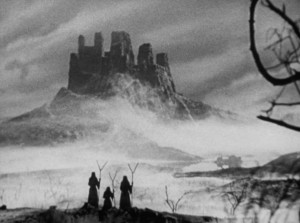
[Orson Welles’s] desire to transcend the barriers separating the classics, the avant-garde, and popular culture remains, I believe, his most enduring legacy.
— Michael Anderegg, Orson Welles, Shakespeare and Popular Culture (1999)
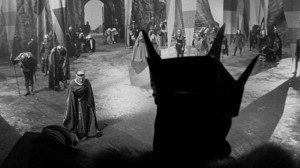
It seems probable that no American film director ever rattled the American mainstream more than Orson Welles, and none of his features rattled that mainstream more than his two versions of Macbeth, made successively out of the same material he shot in 1947, and released successively in the U.S. in 1948 and 1950. Welles’ fifth completed feature, it was the first of many that would come out in more than one version, and the first that decisively shifted his public status, against his own wishes, from that of commercial studio director to that of arthouse auteur — a profile that would be deviated from only by Touch of Evil a decade later, the only other studio feature he would ever make.
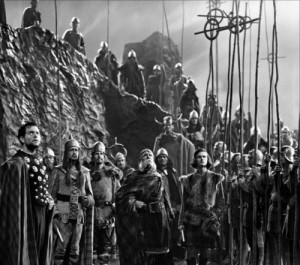
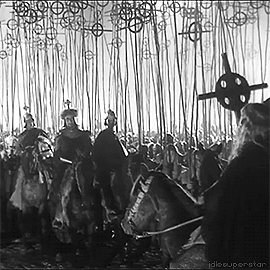
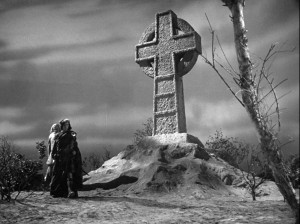
Welles’ approach to the material is wildly neo-primitive and so expressionistic that one can never be entirely sure whether the action is taking place in interiors or exteriors; the same ambiguity persists in the spoken text, where off-screen internal monologue and on-screen external speech often seem only a breath apart. Read more
From the November 4, 1988 issue of the Chicago Reader. This piece is also reprinted in my first collection, Placing Movies.
The absence of Rob Tregenza’s three features — Talking to Strangers, The Arc, and Inside/Out— on DVD continues to be a major cultural gap, although he says that does have plans to release them all when he can. (Regarding Inside/Out, here are two more links.) And there’s a fourth feature that he shot more recently in Norway, called Gavagai, which was shown in Chicago at Facets.
Before Godard produced Tregenza’s third feature, Inside/Out, he selected Talking to Strangers as his “critic’s choice” for the Toronto International Film Festival and even wrote an extended review of it for their catalog, the same year that he showed For Ever Mozart; I interviewed him about Histoire(s) du cinema at the same festival after he showed me the three latest episodes in his hotel room. — J.R.

TALKING TO STRANGERS
**** (Masterpiece)
Directed and written by Rob Tregenza
With Ken Gruz, Marvin Hunter, Dennis Jordan, Caron Tate, Henry Strozier, Richard Foster, Linda Chambers, and Sarah Rush.
Let us consider this waiter in the cafe. Read more
Conversations conducted for Movie Mutations and Abbas Kiarostami (both 2003). — J.R.

Open Spaces in Iran and Africa:
Conversations with Abbas Kiarostami
by Jonathan Rosenbaum and Mehrnaz Saeed-Vafa
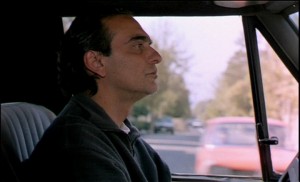
1. Taste of Cherry: spring 1998 (Chicago)
The hero of Abbas Kiarostami’s Taste of Cherry is a 50ish man named Mr. Badii contemplating suicide for unstated reasons, driving around the hilly Tehran outskirts in search of someone who will bury him if he succeeds — he plans to swallow sleeping pills — and retrieve him from the hole in the ground he has selected if he fails. Over the course of one afternoon, he picks up three passengers and asks each of them to perform this task in exchange for money — a young Kurdish soldier stationed nearby, an Afghan seminarian who is somewhat older, and a Turkish taxidermist who is older than he is. The soldier runs away in fright, the seminarian tries to persuade him not to kill himself, and the taxidermist, who also tries to change his mind, reluctantly agrees, needing the money to help take care of his sick child. The terrain Badii’s Range Rover traverses repeatedly, in circular fashion, is mainly parched, dusty, and spotted with ugly construction sites and noisy bulldozers, though the site he’s selected for his burial is relatively quiet, pristine, and uninhabited. Read more
Commissioned by BFI Video for an April 2015 release. — J.R.
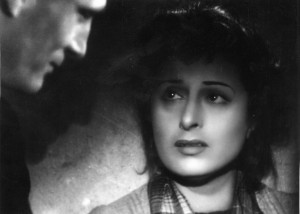
Charlie Chaplin, the late Gilbert Adair liked to assert, doesn’t simply belong to film history; he belongs to history. And the same might be said for Roberto Rossellini’s first major feature, Roma città aperta. Even though it’s routinely regarded as a landmark in film history — the film that decisively put Italian Neorealism on the global map — one could argue that its lasting importance owes far more to the major role it played in humanizing the Italian population for the rest of the world after it emerged from over two decades of Fascist rule under Benito Mussolini.
We don’t hear much about that Fascist rule in Rome Open City, an omission that entails a historical simplification, albeit an understandable as well as an expedient one — not so much an expression of “first things first” as an expression of “second things first,” viewed by most audiences around the world from the vantage point of the war’s end. A project that was first conceived in August 1944, only two months after the Allies had forced the Nazis out of Rome, the film was driven primarily by a desire to expose the brutalities and indignities suffered by Romans under the German occupation as well as the discovery of a common purpose between the Communist and Catholic partisans who had opposed it. Read more
I can’t recall when this was written or what occasioned it (apart from the initial reviews of Eyes Wide Shut when it opened in 1999). — J.R.
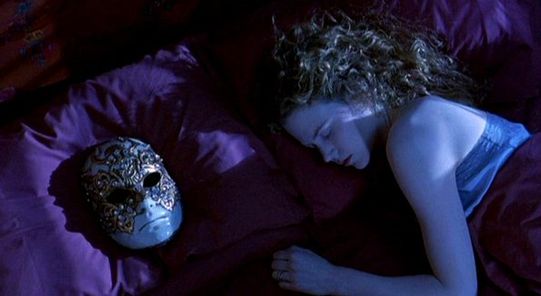
Much of the negative critical response to Eyes Wide Shut came from indignant New Yorkers who felt their city had been misrepresented — worst of all, by a native of the Bronx and onetime Manhattan resident who had dared to expatriate himself. “It’s difficult to make a movie about a city you last set foot in 35 years ago,” J. Hoberman wrote in the Village Voice, sidestepping the hypothesis that Kubrick’s last film might be about something else — some elusive, shifting city of the mind, perhaps, as shared by the fearful dreams and imaginations of a married couple. Similarly, Stuart Klawans’ complaint in The Nation that he couldn’t buy “a Village jazz club with a tuxedoed headwaiter and a last set ending at midnight” overlooks the possibility that Kubrick couldn’t either, any more than he could believe in an intersection in that same Village of Miller and Wren — two nonexistent streets even when he lived in the city.
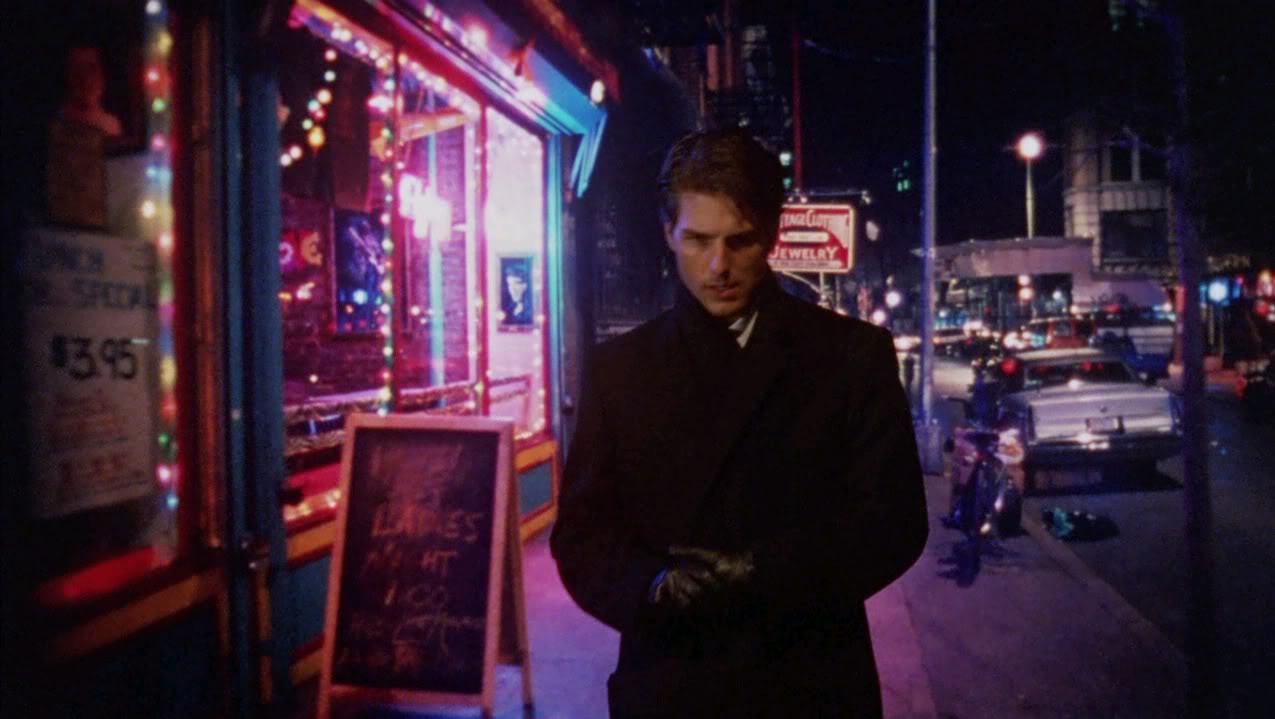

The film is full of such “off” details, and not simply because all of it was shot in an English studio. Read more
From the Chicago Reader, January 10, 1992. — J.R.

THE FILMS OF MIKE LEIGH
Among the buzzwords Marshall McLuhan coined in the 60s, “global village” has always seemed one of the more dubious. The naive notion that TV brings the whole world to our doorsteps — and presumably our doorsteps to the rest of the world — seems founded on assumptions that don’t bear close scrutiny. What do we mean by “the world,” for instance? And what do we mean by TV? TV may afford us some touristic glimpses of elsewhere, along with all the usual ideological baggage of the tourist, but when it comes to closer and better understandings of foreign cultures, I suspect TV may do more harm than good by fostering complacent illusions of knowledge: images wrapped in tidy American sound bites for easy consumption, postage-stamp peeks into worlds often defined in part by what we still don’t know.
What TV seldom offers us — unless we understand other languages and possess satellite dishes — is the rare privilege of overhearing other cultures talk to themselves, experiencing them from within rather than on our terms. To be on the inside looking out offers a different kind of knowledge, attained more by osmosis and intuition than by simplification, translation, or exegesis. Read more
From the Chicago Reader (November 6, 1992). — J.R.
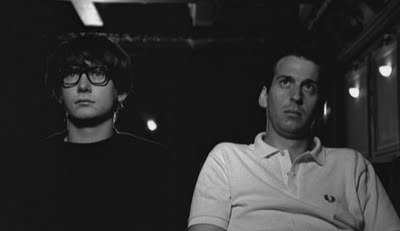
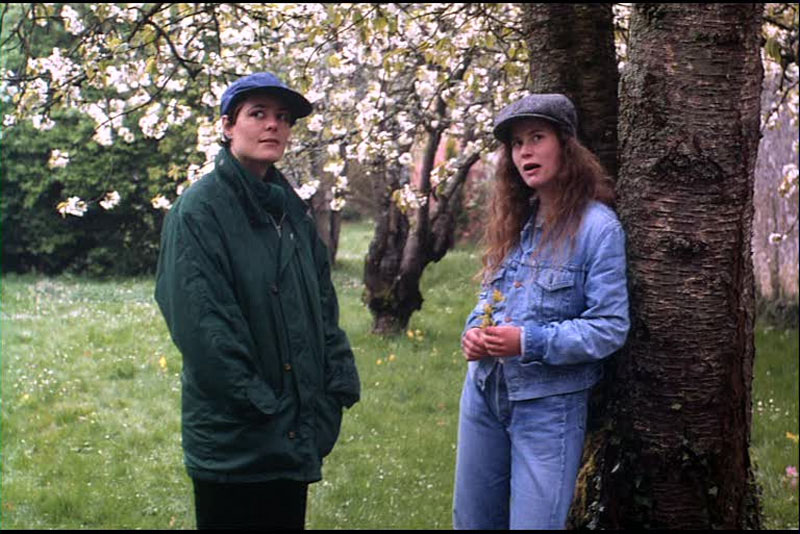
THE HOURS AND TIMES
*** (A must-see)
Directed and written by Christopher Munch
With David Angus, Ian Hart, Stephanie Pack, Robin McDonald, Sergio Moreno, and Unity Grimwood.
A TALE OF SPRINGTIME
** (Worth seeing)
Directed and written by Eric Rohmer
With Anne Teyssère, Hugues Quester, Florence Darel, Eloise Bennett, and Sophie Robin.
It’s easy enough to understand why gay and lesbian film festivals exist, especially at this juncture in history, but I can’t say I’m happy about what they do to classifying films. After all, we don’t have festivals devoted to heterosexuals or dead white men or Catholics or intellectuals or Republicans or Democrats, and I sincerely doubt that any good film should be categorized in so parochial a fashion.
By the time this review appears, we’ll probably have elected a president — our first — who professes to consider gays and lesbians part of the American mainstream, not a “special” category. This fact alone prompts some consideration of what it means to perpetuate such categories, in a film festival or in a review.
Though it’s natural for an oppressed minority to band together — for consciousness raising, among other reasons — the meaning of such events to the public at large is something else. Read more
From the Chicago Reader (September 26, 1997). — J.R.
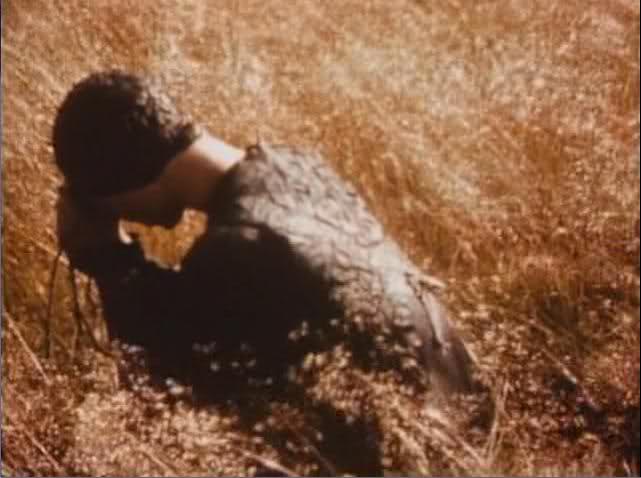
Medea
Rating *** A must see
Directed by Lars von Trier
Written by Carl Dreyer, Preben Thomsen, and von Trier
With Kirsten Olesen, Udo Kier, Henning Jensen, Solbjaig Hojfeldt, and Prehen Lerdorff Rye.
Sunday
Rating *** A must see
Directed by Jonathan Nossiter
Written by James Lasdun and Nossiter
With David Suchet, Lisa Harrow, Jared Harris, Larry Pine, and Joe Grifasi.
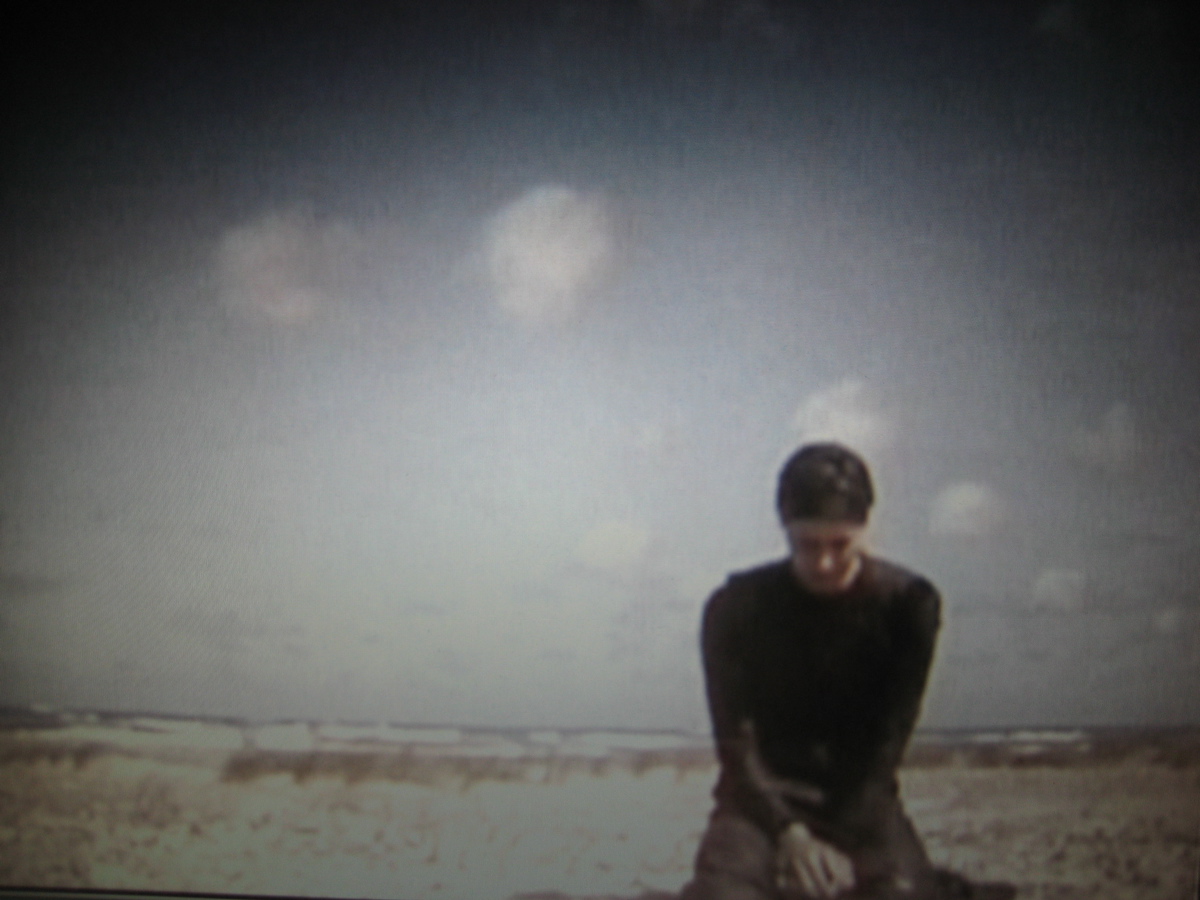
It’s been disconcerting to read, over the past several weeks, of no fewer than four Hollywood projects in the works that purport to be by and/or about Orson Welles. Three of these are based on Welles scripts that he never found the money to produce: The Big Brass Ring (an original with a contemporary setting), The Dreamers (an adaptation of two Isak Dinesen stories), and The Cradle Will Rock (an autobiographical script set in the 30s). Yet all have been extensively rewritten, and the fourth — as recently reported by Todd McCarthy in Daily Variety — is a series of whole-cloth inventions about the making of Citizen Kane, presumably with a few facts thrown in, called RKO 281, written by Chicago playwright John Logan.
Why is all this money, effort, and media attention being expended on “celebrating” Welles when nobody is showing the slightest interest in making available unseen Welles features like Don Quixote and The Other Side of the Wind? Read more
From the Chicago Reader (January 10, 2003), where it was printed under the title “Against the Tide”. — J.R.

While putting together a collection of my film pieces for an upcoming book I included an appendix listing my 1,000 favorite films and videos made between 1895 and the present — features and shorts, live action and animation, narrative and experimental. The point was to cite not the works I consider the most important historically but the ones that still provide me with the most pleasure and edification.
This took more work than anticipated because I didn’t have a surefire method of recalling all the possible candidates. I worried about the inevitable oversights, including even ones from 2002. I also worried that I’d wind up weighting the list with more old than recent films — a fear that proved to be mainly groundless. The year between 1924 and 2002 for which I listed the fewest titles — five — was 1937. Four other years — 1926, 1939, 1942, and 1945 — yielded only six apiece. The peak year was 1955, with 21 titles. Generally speaking, there was a steady rise through the 50s, a decline in the 60s, then a leveling off: 17 items in the teens, 72 in the 20s, 95 in the 30s, 103 in the 40s, 160 in the 50s, 133 in the 60s, 130 in the 70s, 129 in the 80s, and 125 in the 90s. Read more
This appeared in the November 6, 1998 issue of the Chicago Reader. Reseeing Pleasantville on DVD, I continued to find its diverse perceptions and confusions equally fascinating. On his audio commentary, producer-director-writer Gary Ross alludes to his childhood as the son of an activist screenwriter who was blacklisted, and part of what’s so intriguing about the film is the way its own theme of innocence crossed with sophistication is matched at times by its own multiple forms of ideological doublethink. Ross’s ongoing and seemingly untroubled assumption, for instance, that black and white film is innately artificial and stylized whereas color film is innately “realistic” makes me wonder how he can perceive MGM Technicolor of the 50s as being closer to reality (and thus presumably further away from fantasy) than all the black and white cinematography from the same period — or whether, for that matter, he can even distinguish sufficiently between the alleged “realism” of the contemporary color sections of this film and the subsequent expressionism of the hallucinogenic colors impinging on a 50s sitcom’s black and white to confidently declare that both of these kinds of color are automatically and unproblematically superior to black and white in representing reality accurately. Read more
From the August 11, 2000 Chicago Reader. — J.R.

Hollow Man
Rating *** A must see
Directed by Paul Verhoeven
Written by Andrew Marlowe
With Elisabeth Shue, Kevin Bacon, Josh Brolin, Kim Dickens, Greg Grunberg, Joey Slotnick, Mary Randle, and William Devane.
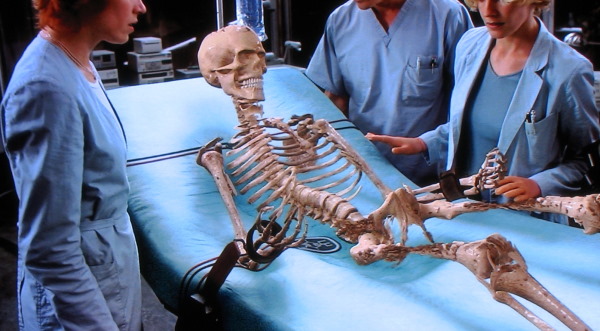
Apart from Space Cowboys, Clint Eastwood’s enjoyably auteurist swan song, Paul Verhoeven’s latest feature, Hollow Man, was the only summer Hollywood release I’d been looking forward to. For one thing, I’d hoped it would give me an opportunity to reassess his previous works, most of which I now think I underestimated when they were released.
I was pretty hospitable to Total Recall (1990), but I awarded a black dot to Basic Instinct (1992), mainly because I was incensed about the calculations of Joe Eszterhas’s $3 million script (I’m leaving aside Verhoeven’s Dutch movies because the only one I’ve seen is The 4th Man). I declined to review Showgirls (1995) at length, noting somewhat puritanically toward the end of my capsule: “I suppose the overall theory is that male spectators will tolerate any amount of stupidity and unpleasantness for the sake of acres of tits and ass, but you’ve got to hand it to the filmmakers for putting such a theory to the ultimate test: if anyone emerges from this with a smile on his face he must hate women as much as this movie does.” Read more
From Monthly Film Bulletin, January 1977, Vol. 44, No. 516. Both this film and Mekas’s earlier diary film Walden (1969) have been released together on a Blu-Ray from Kino Lorber. –- J.R.
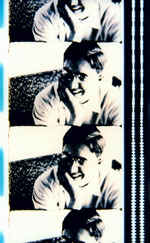
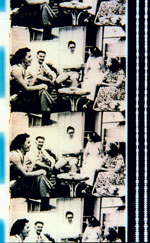
Diaries, Notes & Sketches — Volume 1, Reels 1-6: Lost Lost Lost
U.S.A. ,1975
Director: Jonas Mekas

Dist–Artificial Eye. p.c /p/sc/ph–Jonas Mekas. addit. ph–Charles Levine, David Brooks, Peter Beard, Ken Jacobs. Part in colour. ed–Jonas Mekas. m/songs–including piano music by Chopin, “Abschied” by Schubert, traditional Lithuanian music, “Kiss of Fire” by Lester Allen, Robert Hill, excerpts from Wagner’s “Parsifal”,“How Deep Is the Ocean” by Irving Berlin, music by Lucia Dlugoszewski. sd/narrator–Jonas Mekas. with–(Reels 1-6) Jonas Mekas, Adolfas Mekas; (Reel 2) Prof. Pakstas, Juozas Tysliava, Stepas Kairys, Zadeikis, George Maciunas and family, Faustas Kirsa, Aleksandra Kasuba, Vytautas Kasuba, Vladas Jakubenas, Jeronimas Kacinskas; (Reel 3) Gideon Bachmann, Dorothy Brown, Sidney Grief, Lily Bennett, Storm De Hirsch, Louis Brigante, George Fenin and son, Arlene Croce, Edouard de Laurot, Ben Carruthers, Leo Adams, Sheldon Rochlin, Frances Starr, Robert Frank, Peter Bogdanovich, LeRoi Jones, Frank O’Hara, Allen Ginsberg, Bremser, Ged Berliner, Dick Bellamy; (Reel 4) Gretchen Weinberg, Herman Weinberg, Dick Preston, Dwight Macdonald, Shirley Clarke, Julian Beck, Judith Malina, Robert Hughes, Nat Hentoff, Norman Mailer, David Stone, Jules Feiffer, Naomi Levine, David Reynolds, Paul Goodman; (Reet 5) Peggy Stefans, Herman Weinberg, Gretchen Weinberg, Marty Greenbaum, Peter Beard, Ed Emshwiller, David Stone, Taylor Mead, Sheila Finn, P. Read more




